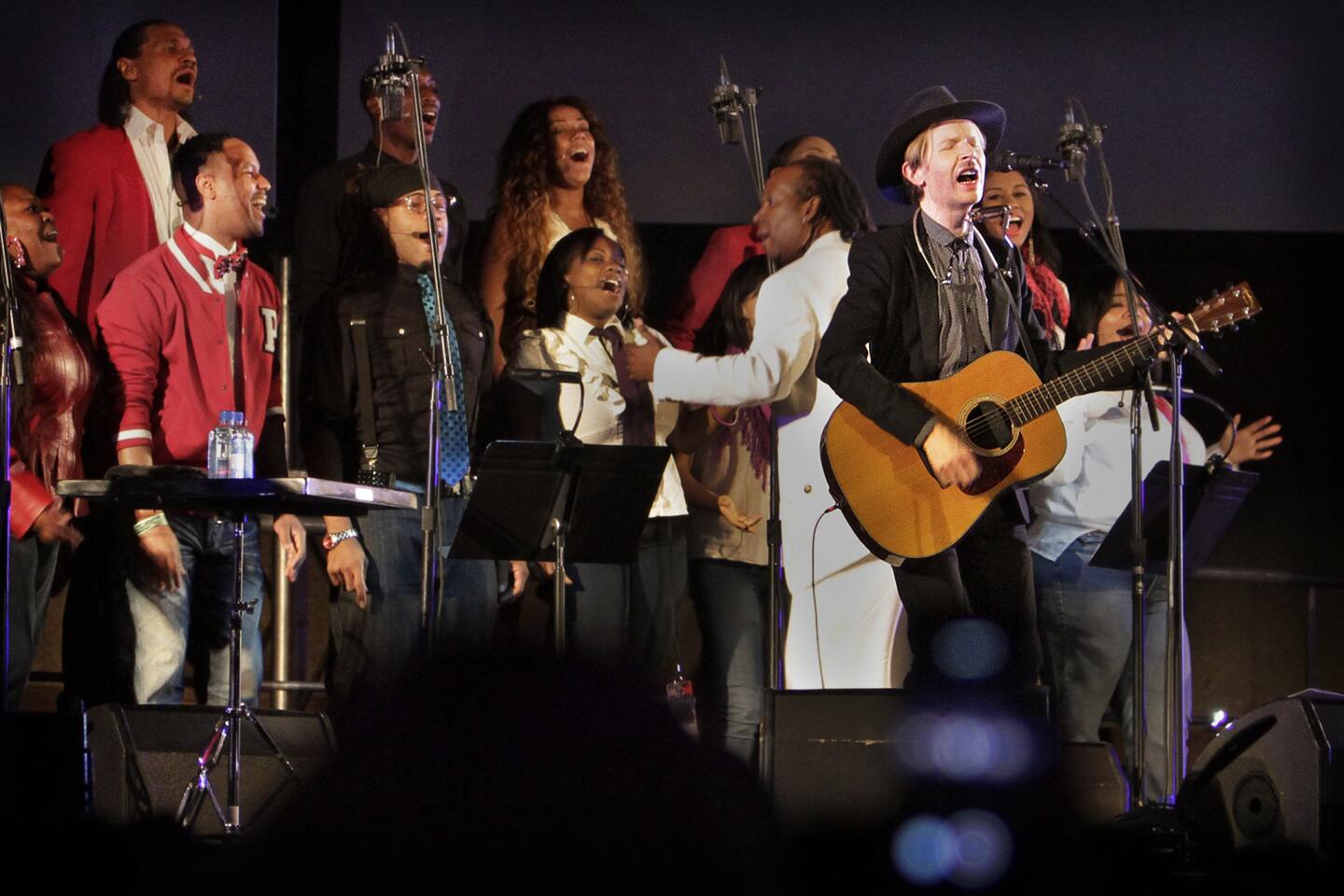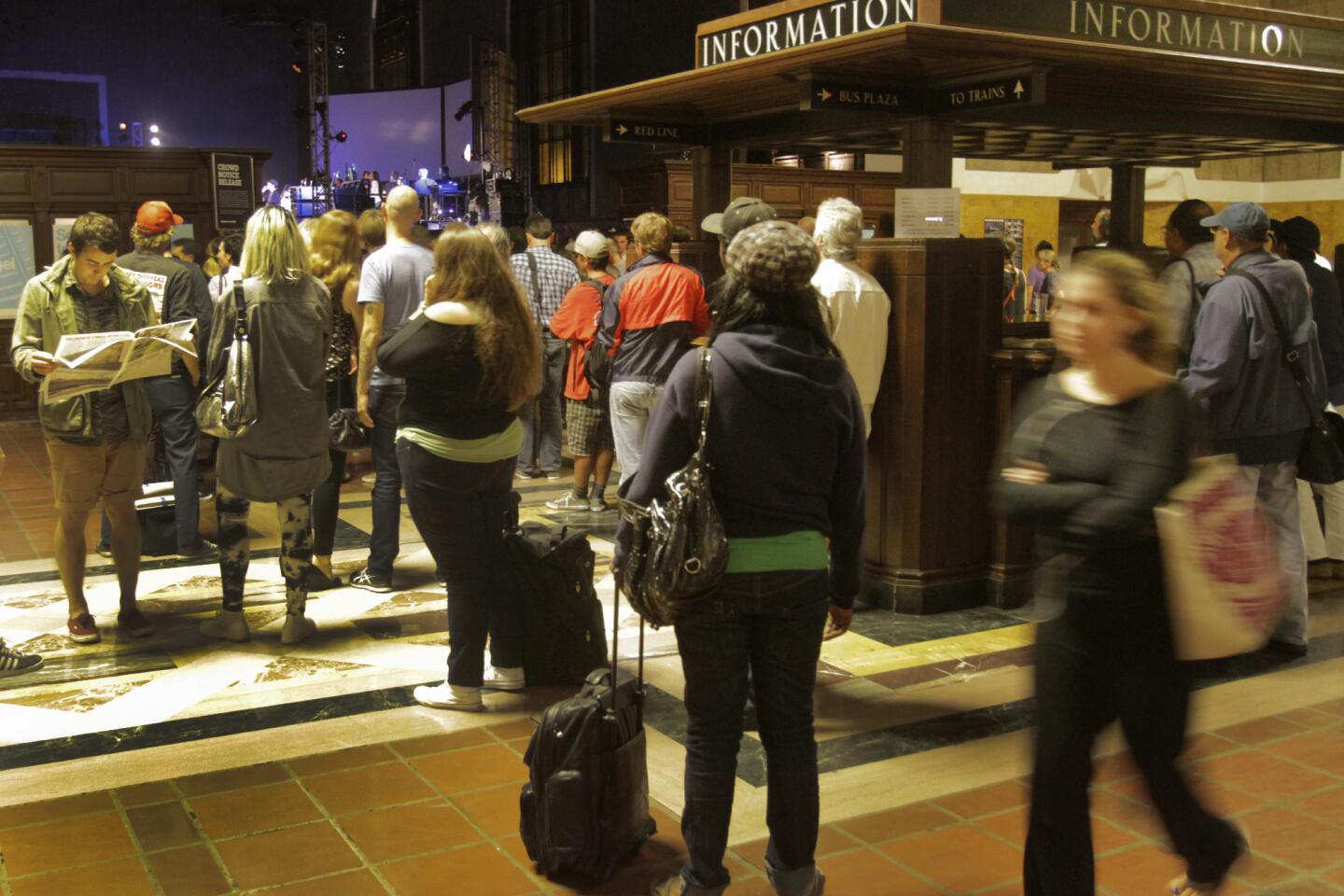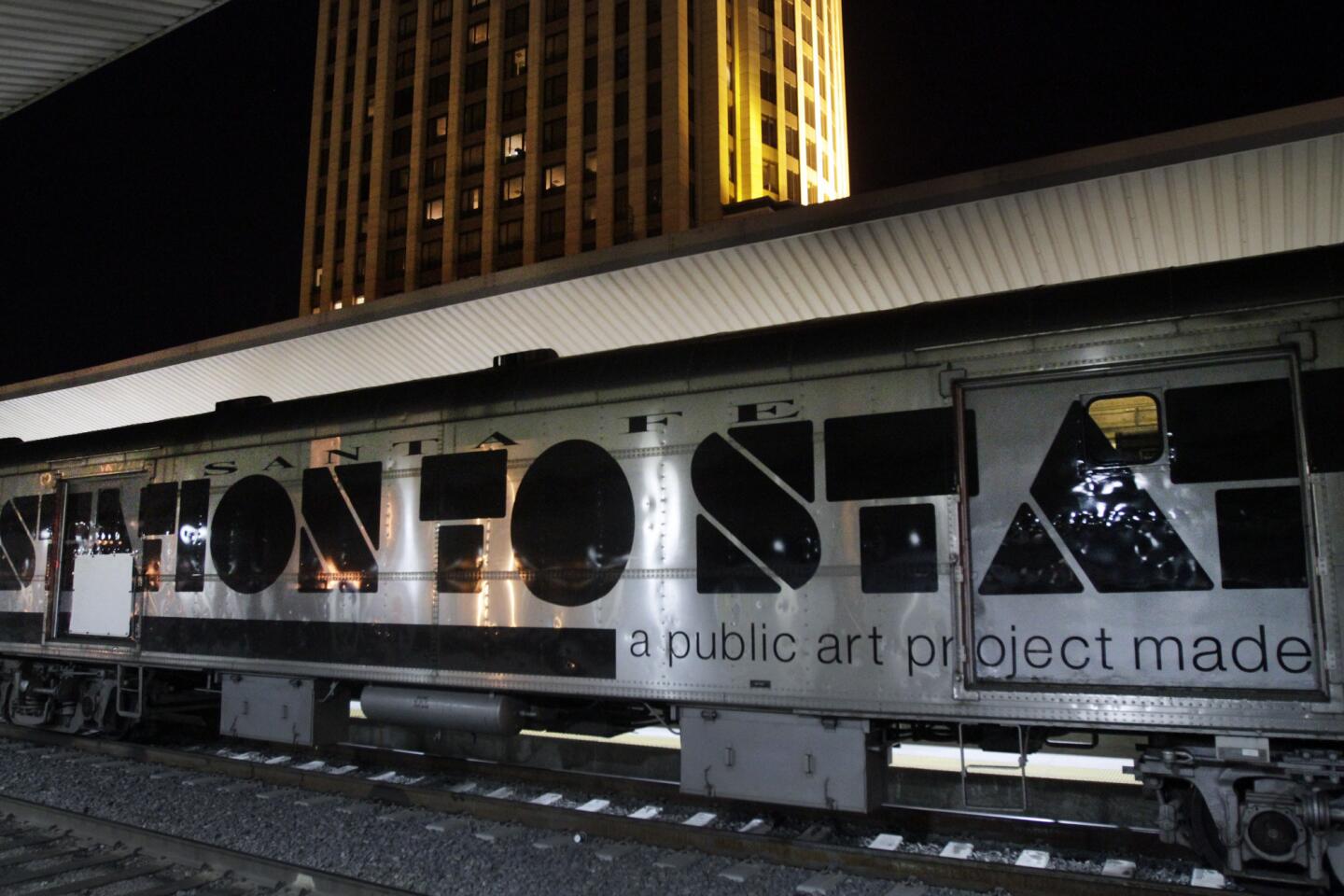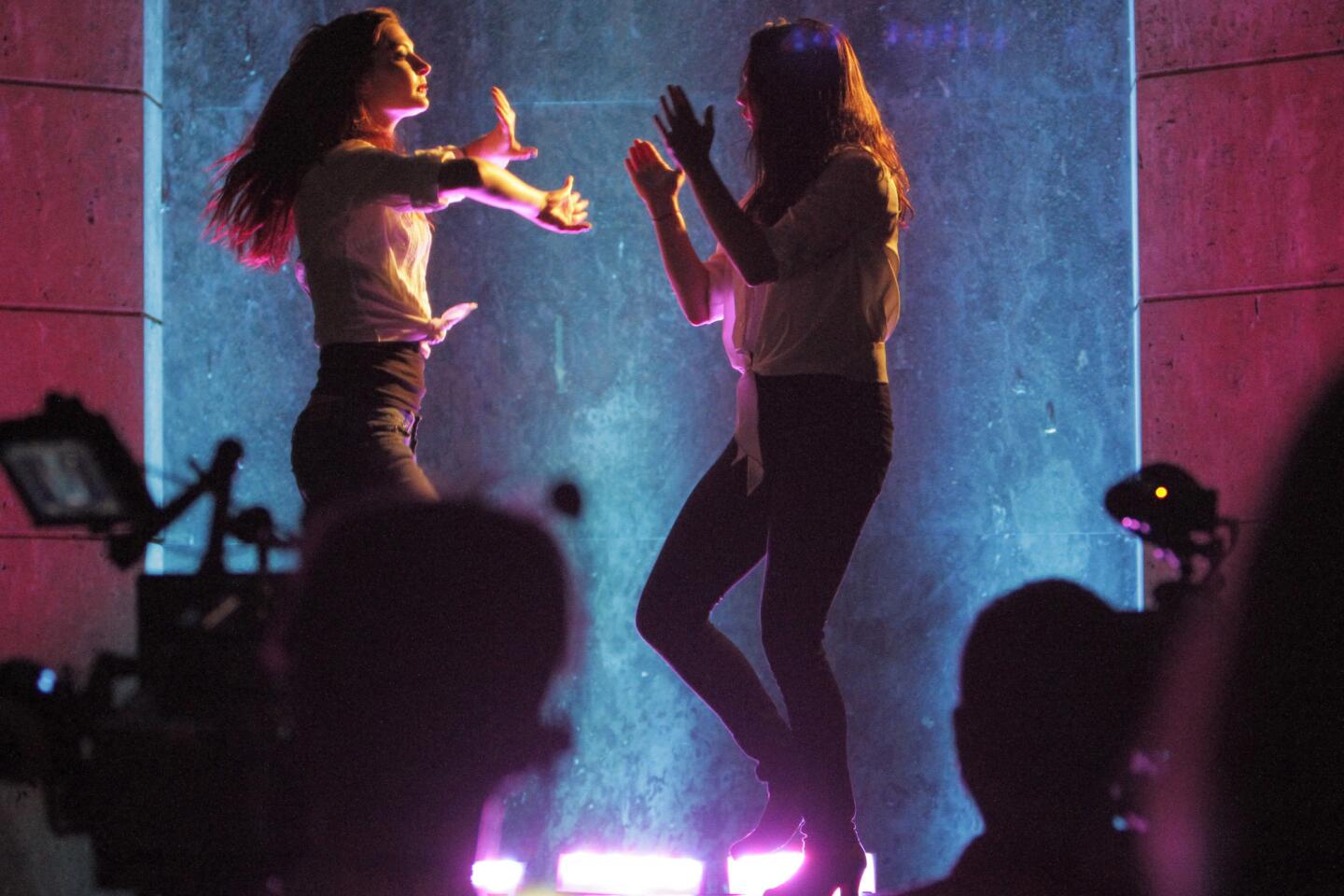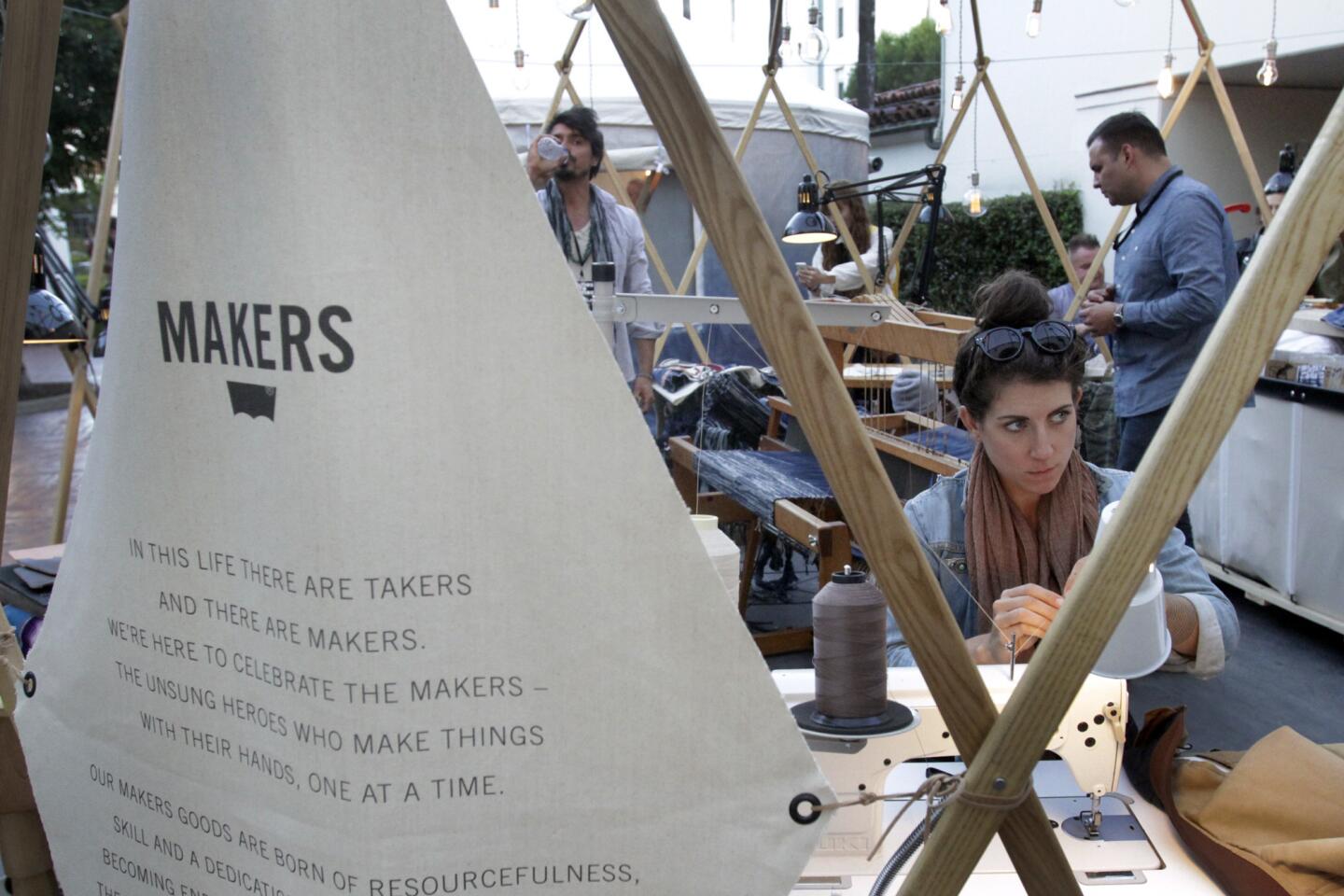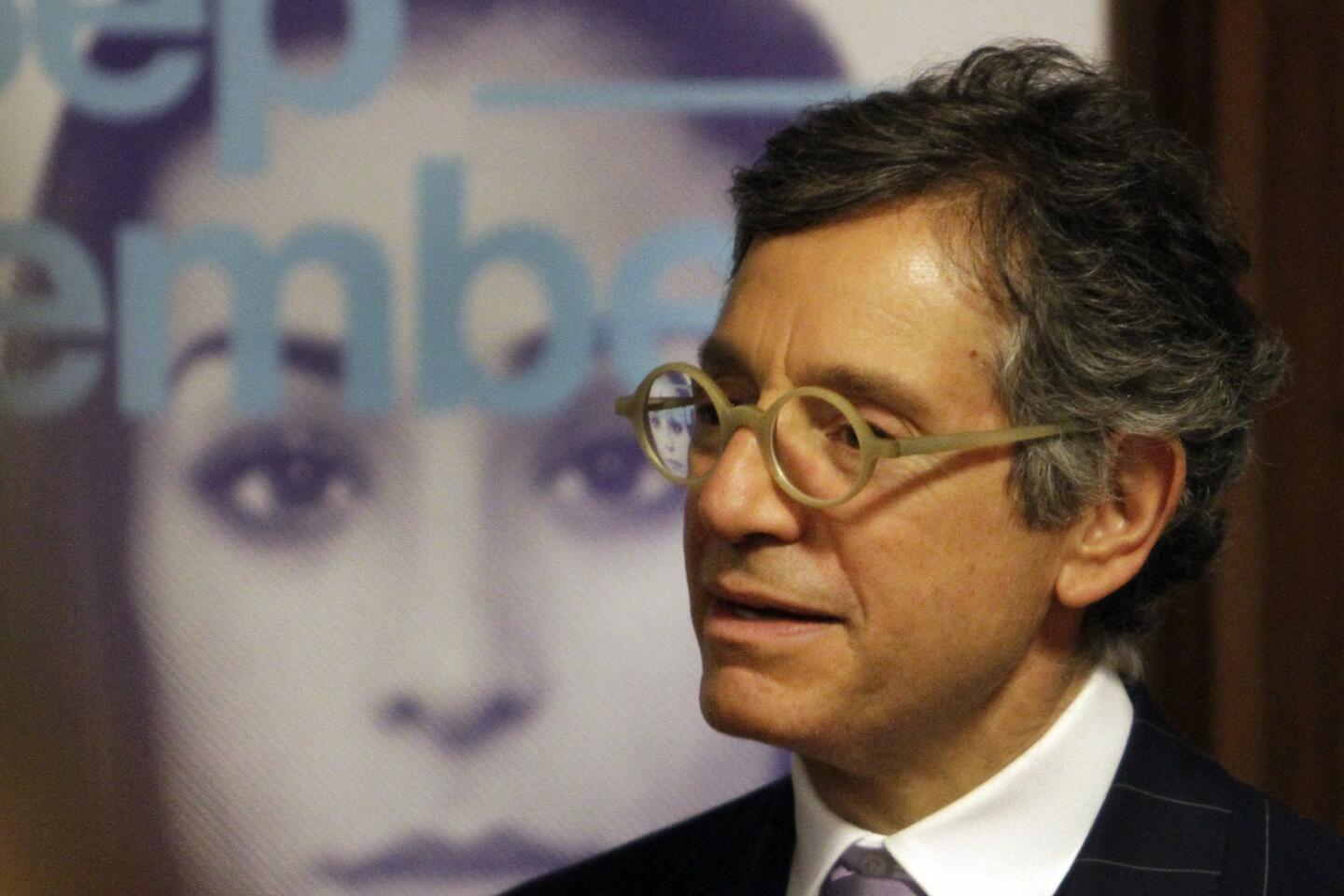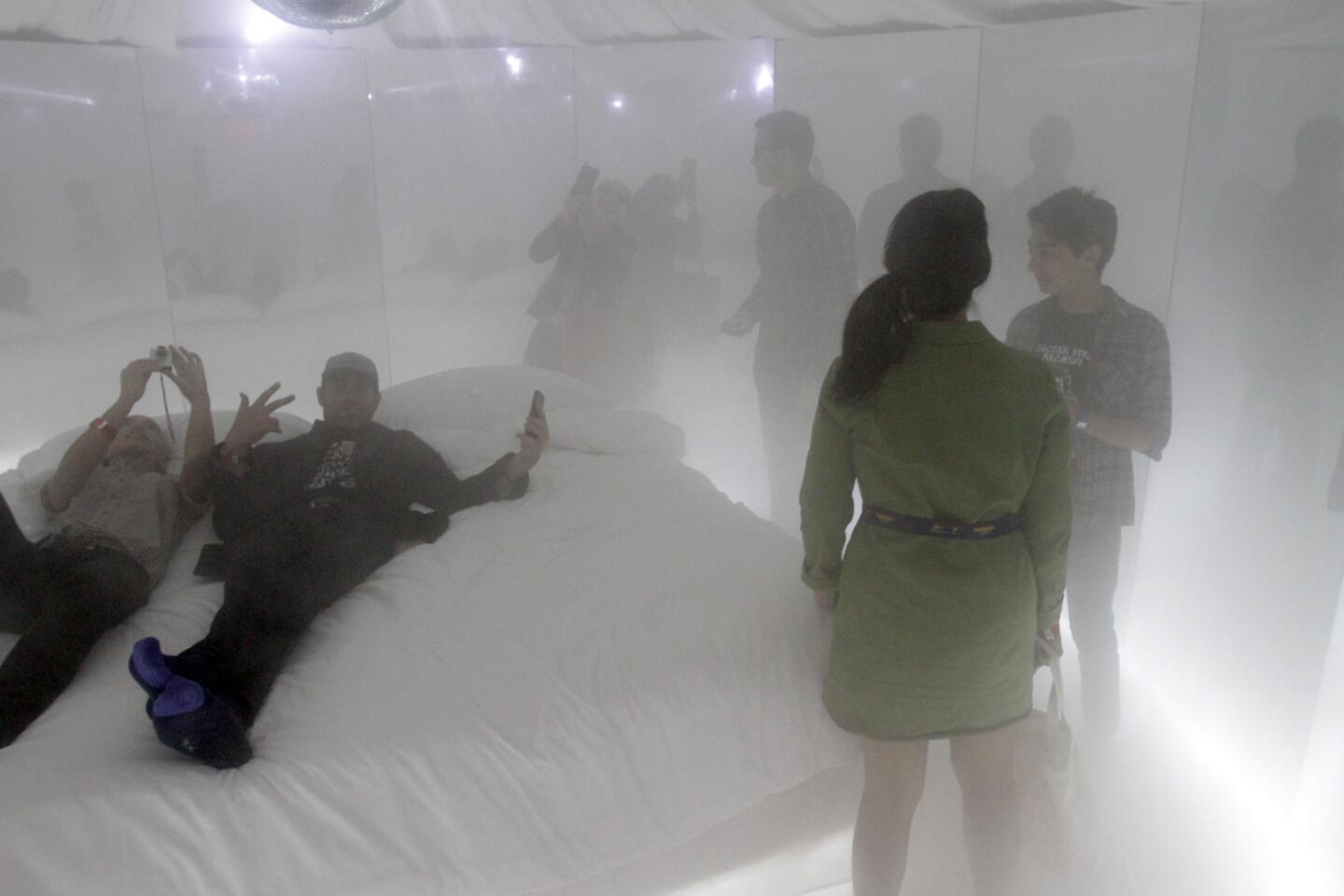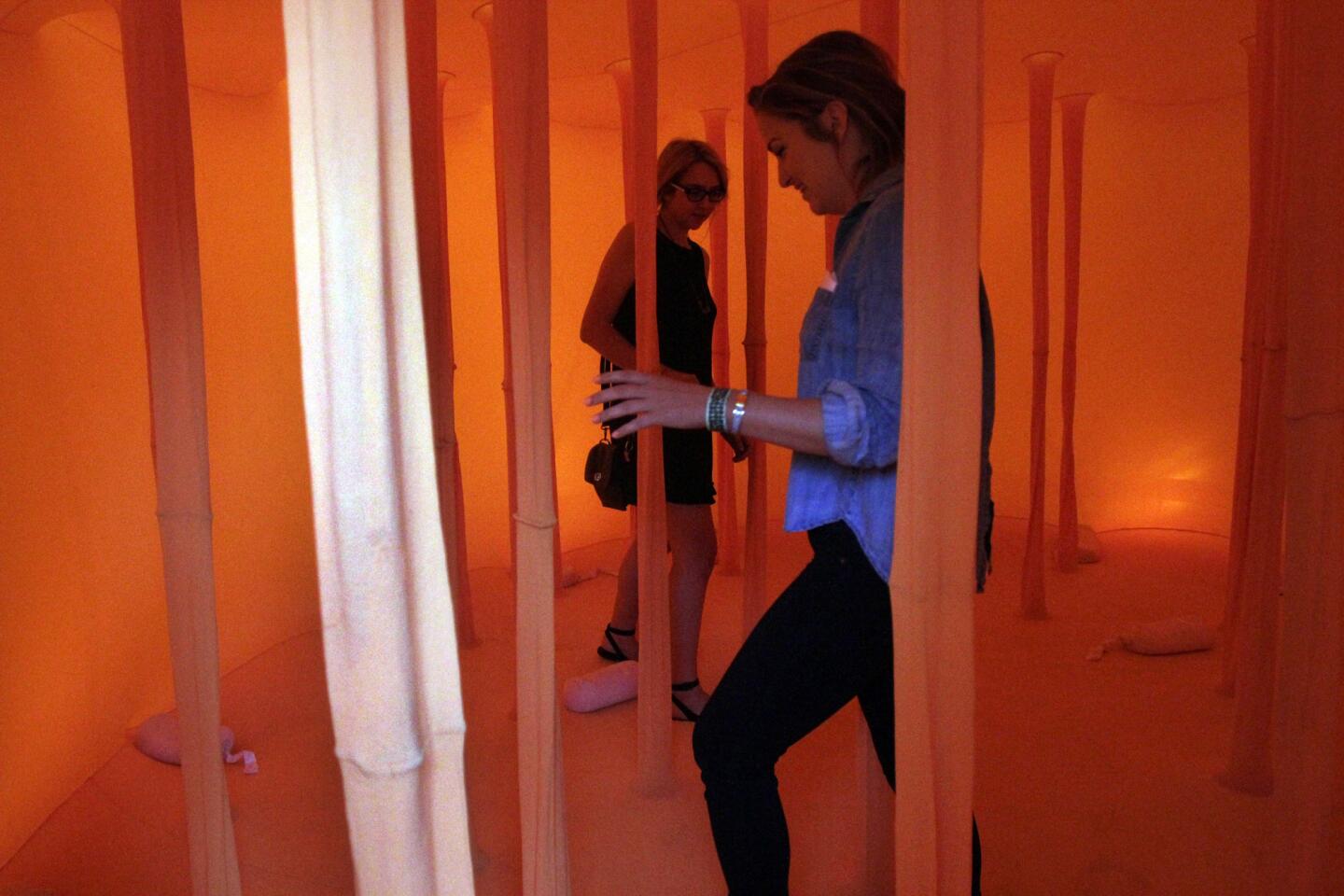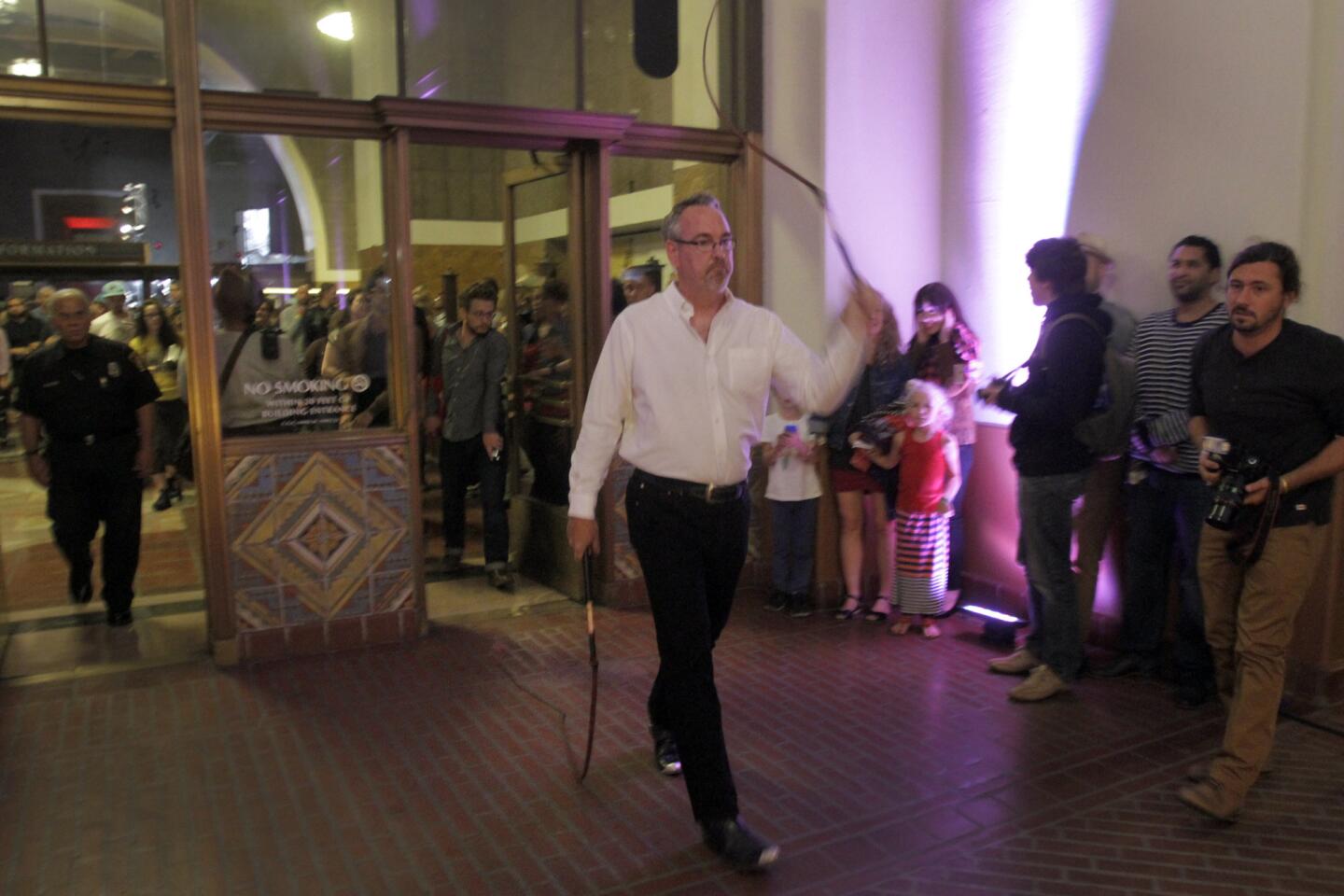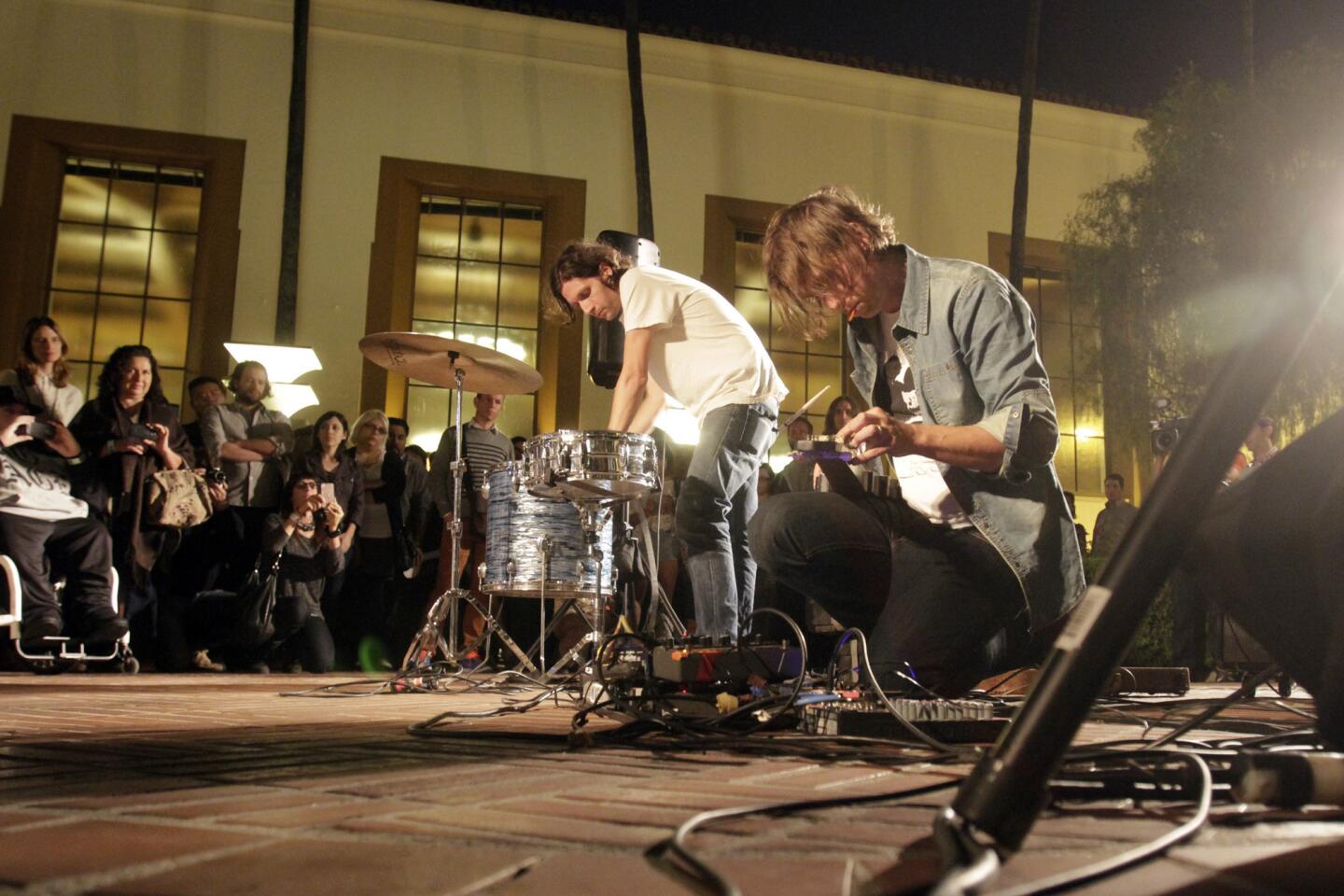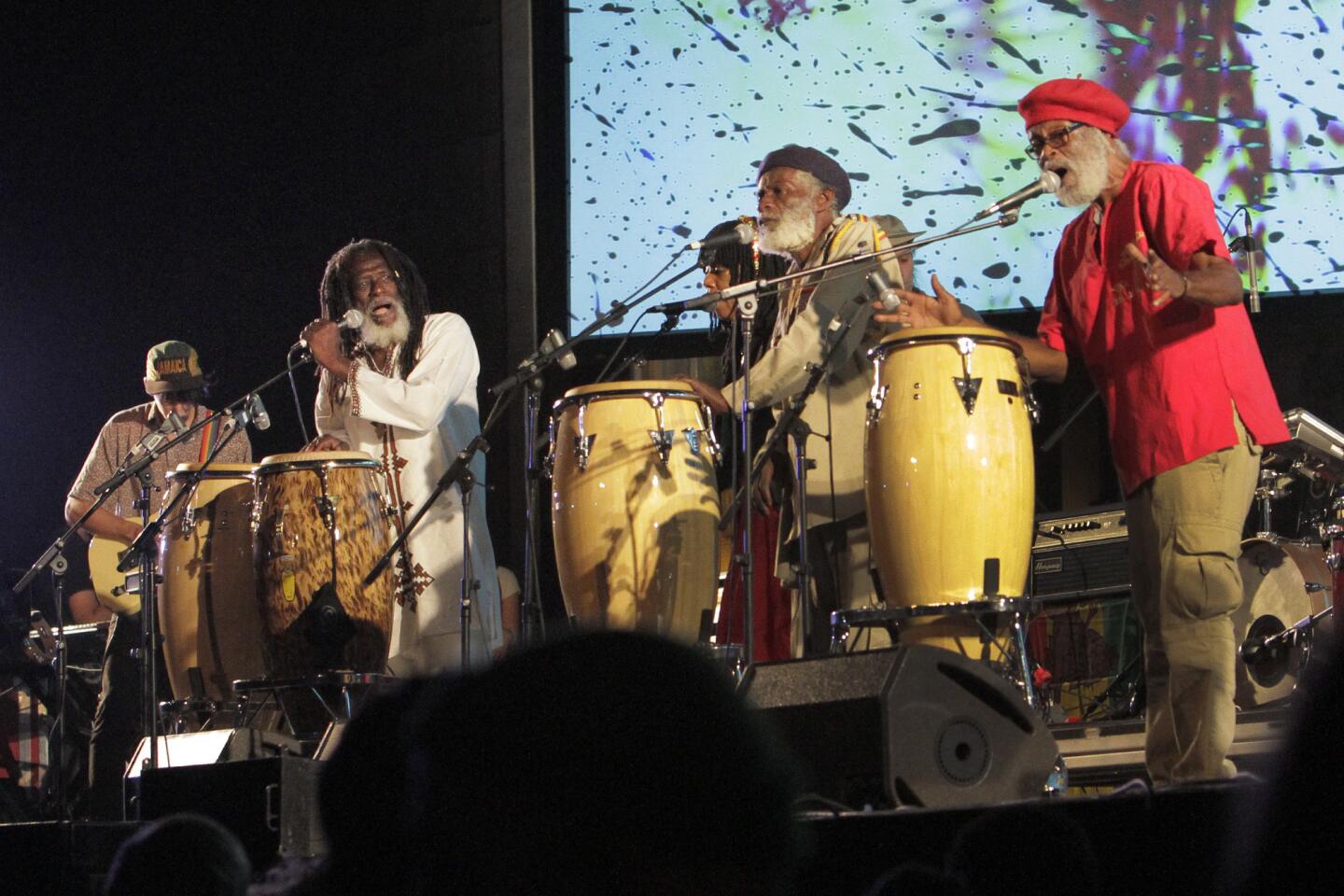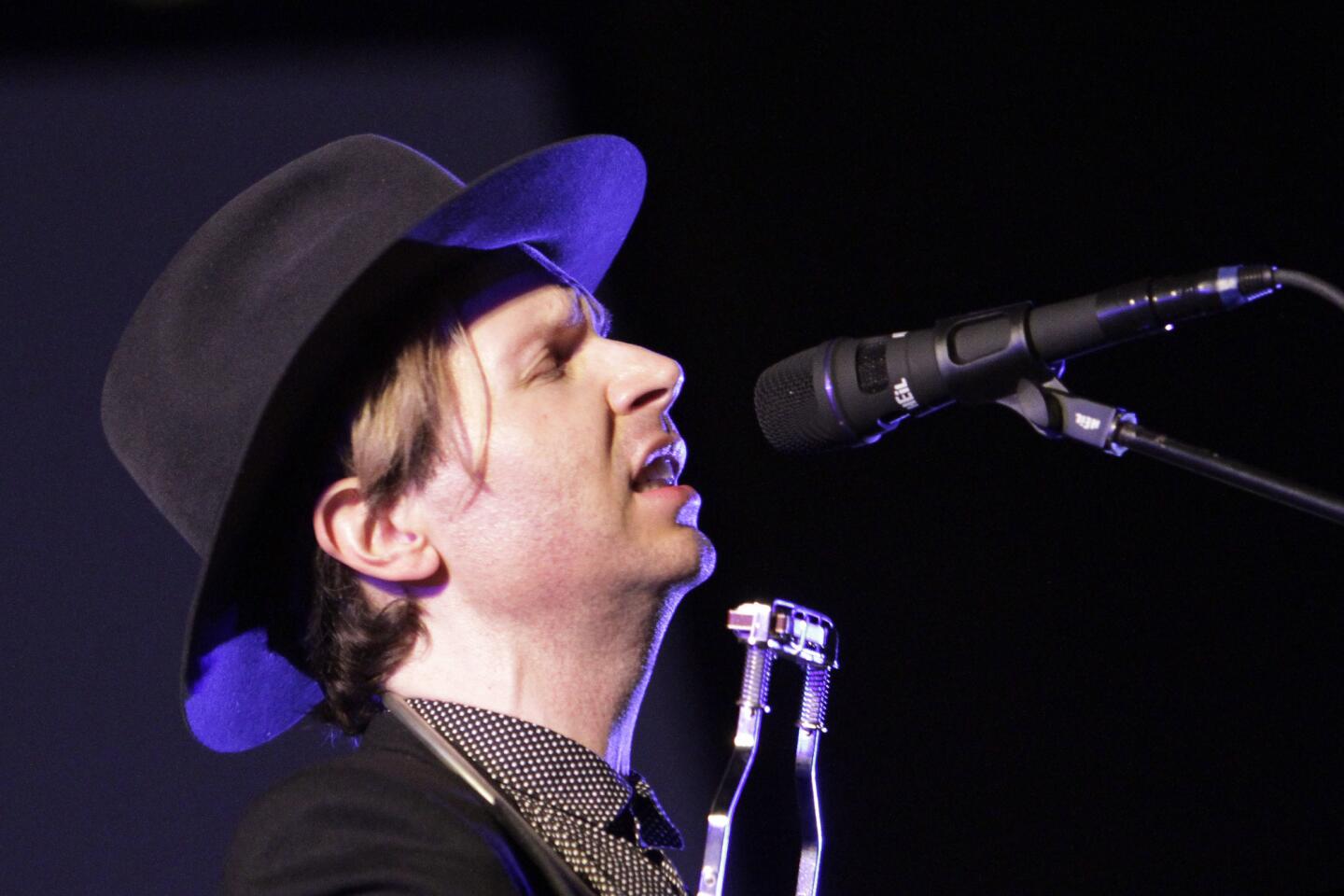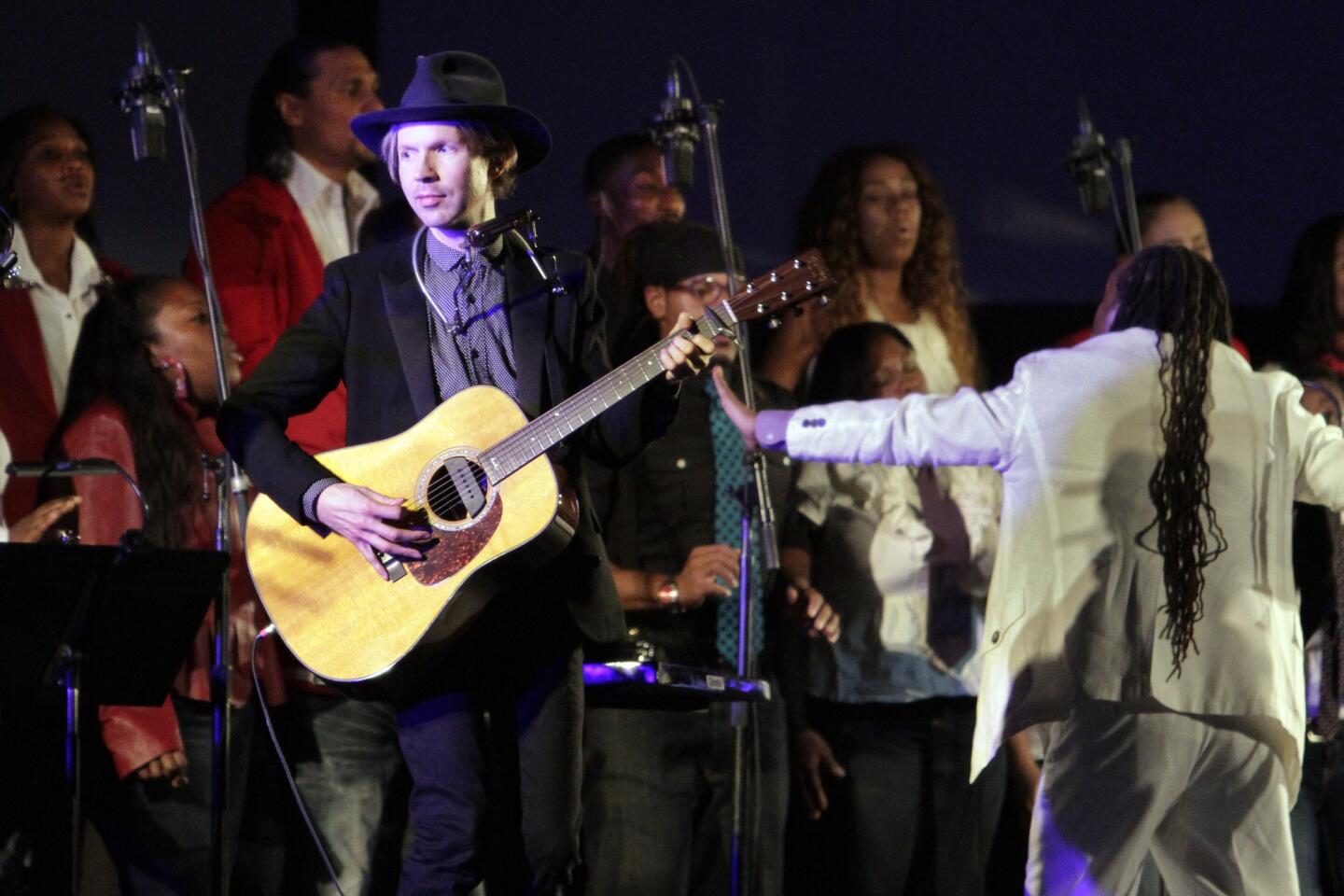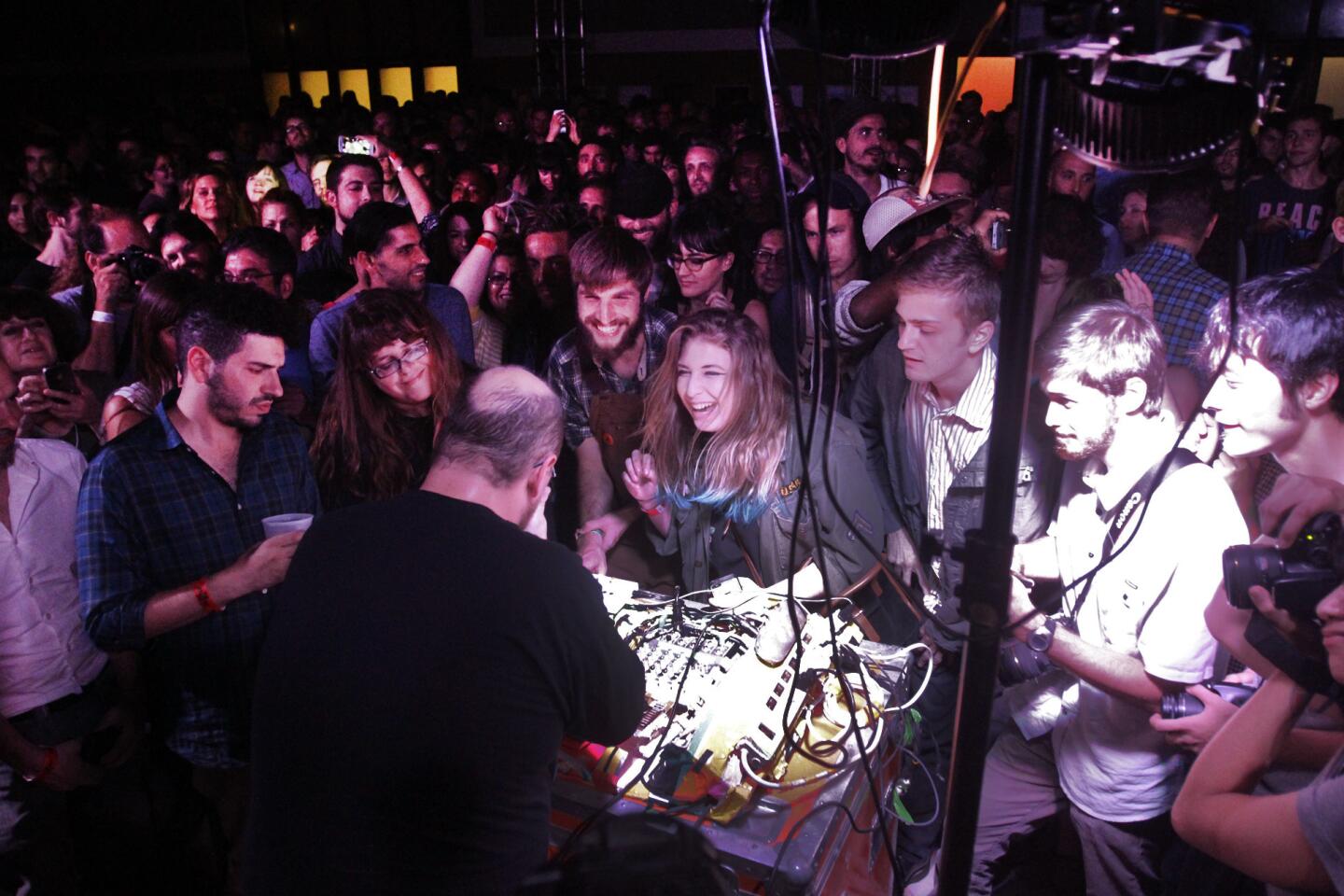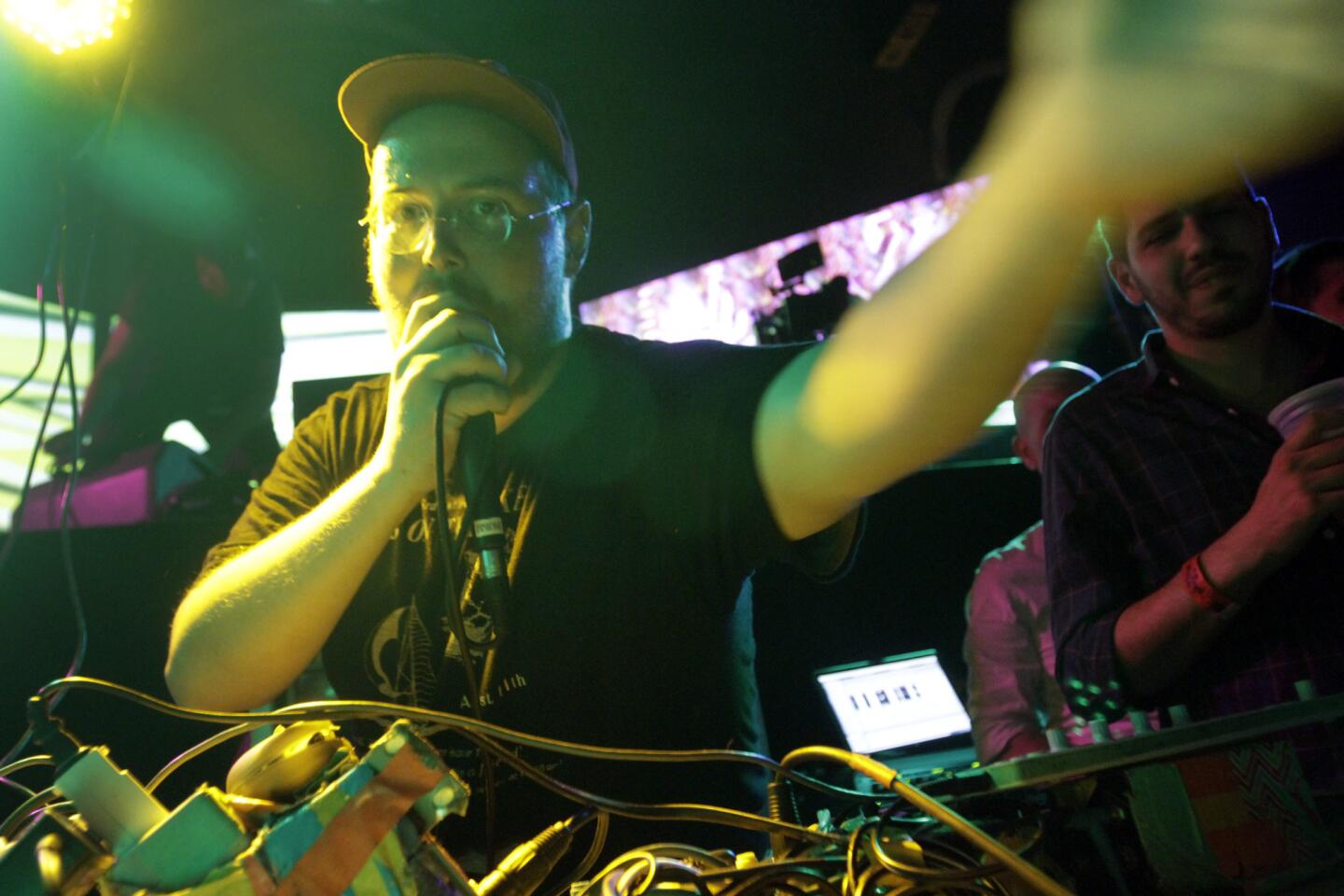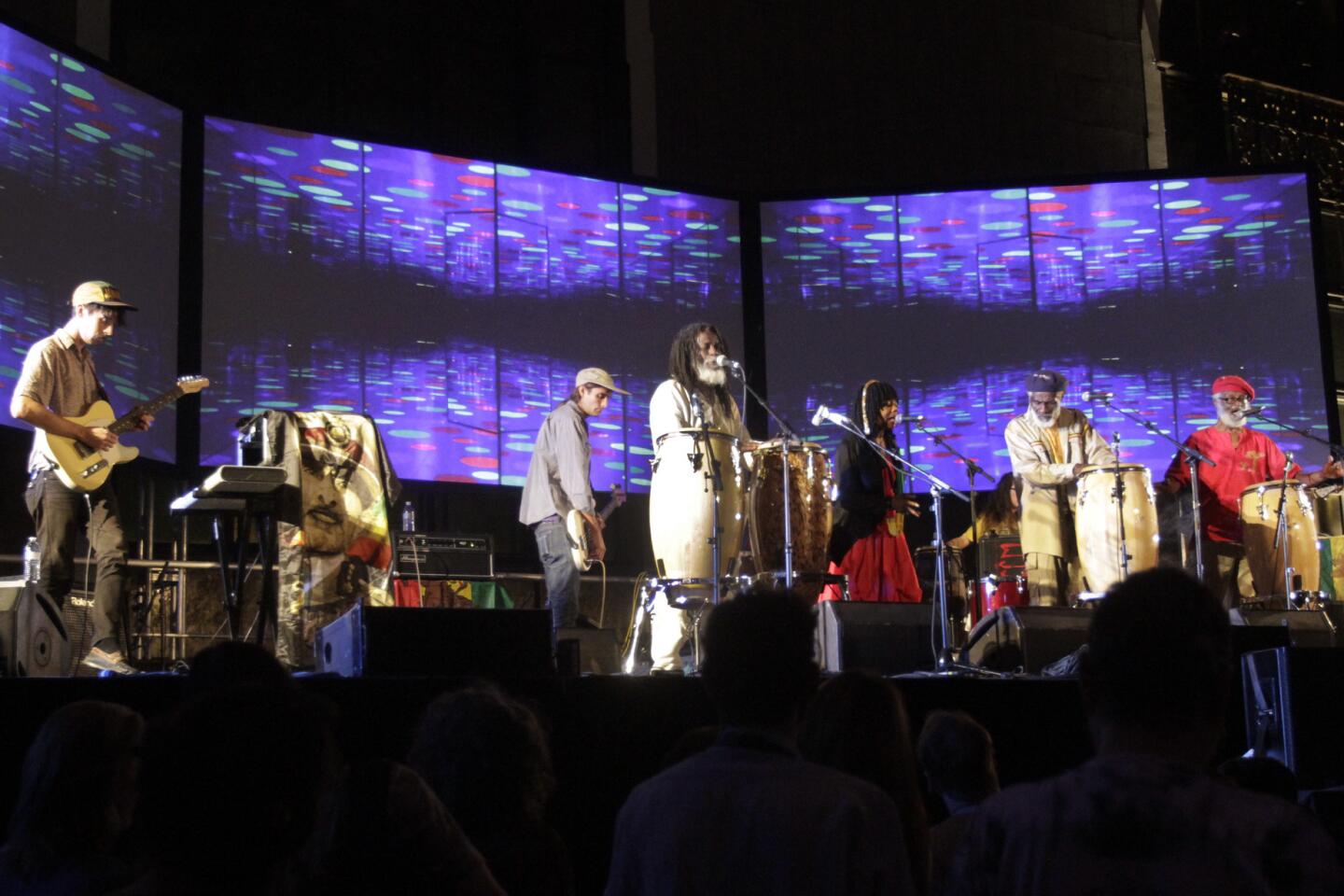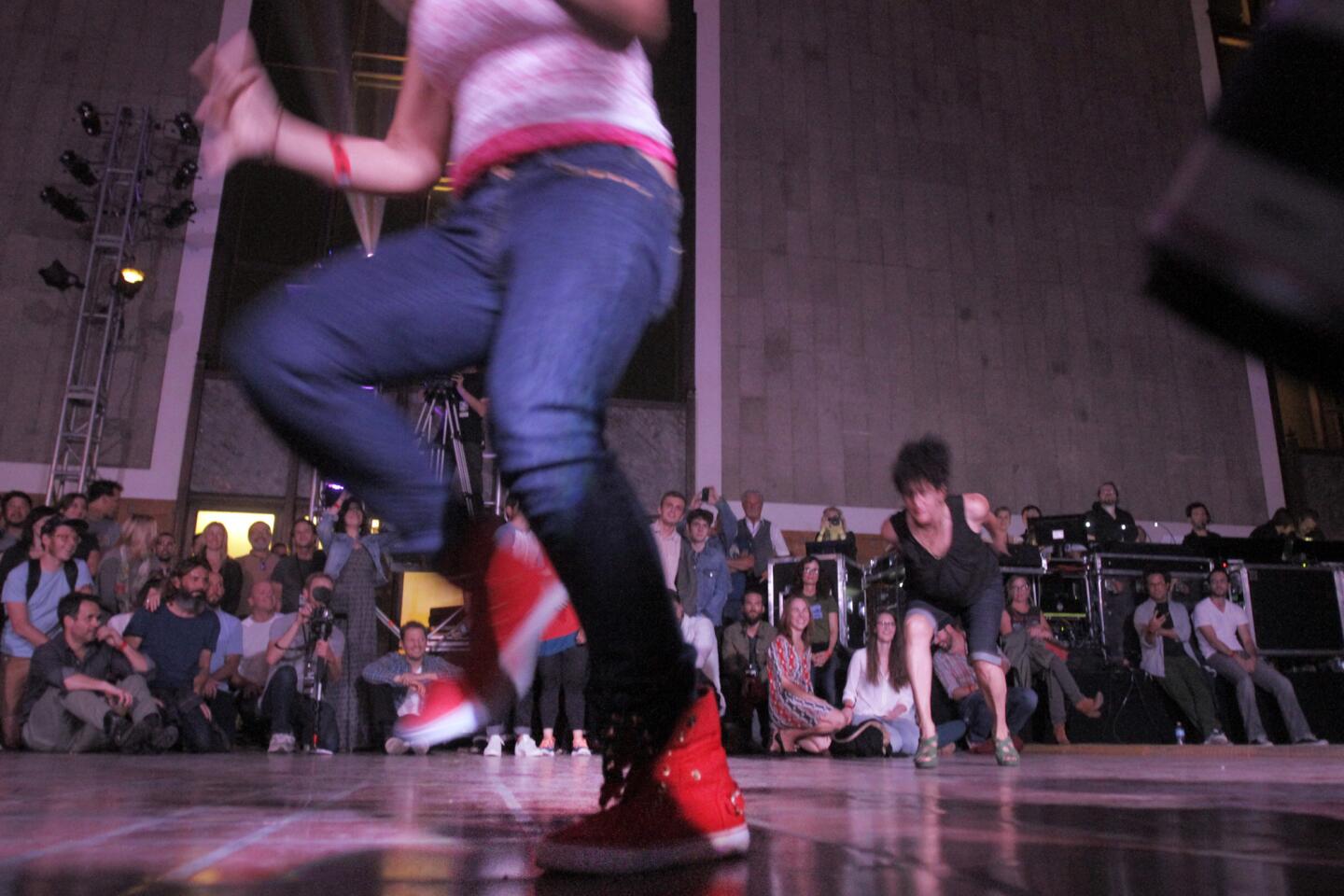‘Station to Station’ train at the end of the line but fired with purpose
Artist Doug Aitken, back home in Venice after three weeks crossing the country by train with the artists and musicians who joined his “Station to Station” traveling art exhibition, has yet to lose his sense of movement.
“It’s weird,” he said. “I looked out the window and — we’re not in motion! But everything around me seems filled with electricity and newness.”
That’s one effect Aitken was hoping for when he started “Station to Station,” a series of what he called “nomadic happenings” connected by rail. In early September, a core of fellow travelers set off with Aitken on nine vintage train cars that included a recording studio and a content car for editing video and updating the project’s website. Liz Glynn transformed a passenger cabin, “the Drawing Room,” into a studio where she created new pieces to fill her art yurt between each stop, helping to ensure no two experiences during the “Station to Station” happenings were exactly alike.
At Los Angeles’ Union Station, guests wearing headlamps entered a yurt made of dark industrial felt and slipped through a maze of narrow passageways chalked with pictorial and mathematical glyphs as Glynn, wrapped in a gray felt sheath, spoke about interstitial space.
PHOTOS: Arts and culture in pictures by The Times
Urs Fischer’s yurt was an all-white cocoon filled with billows of lightly scented fog and a spinning disco ball above a pillowy white bed surrounded by mirrored walls. The effect was serene and ethereal.
Outside the art yurts was a sort of frenzied carnival that drew high-profile artists (Kenneth Anger, Glynn, Piero Golia, Nicole Miller), Hollywood insiders, collectors and museum leaders (Los Angeles County Museum of Art’s Michael Govan, the Hammer’s Ann Philbin and ex-Museum of Contemporary Art director Jeffrey Deitch) while No Age, Dan Deacon, Sun Araw and the Congos performed, and Beck closed out the night.
“He’s conducting a moving and unpredictable orchestra,” Govan said of Aitken.
At St. Paul, Minn.’s Union Depot, Patti Smith performed with her son Jackson Smith. In Pittsburgh and Chicago, Thurston Moore played with John Moloney in their new band Chelsea Light Moving.
The idea was not only to bring concerts and art installations (by Fischer, Anger, Glynn, Carsten Höller and Ernesto Neto) to urban centers and remote locations across the U.S. but to detonate conventional boundaries within the art world.
“There needed to be other experiments or template for culture less anchored to place,” Aitken said. “I was looking for different possibilities.”
Sarah Rara of the Lucky Dragons said she appreciated the artistic cross-pollination. “We see this kind of thing a lot in Europe,” she said, “festivals where art and music mix more.”
CHEATSHEET: Fall arts preview 2013
“It’s this series of fleeting encounters,” Glynn said, “whether a film or a band or me personally lecturing. It’s this intense level of experiential detail that changes depending on where it is. The question is, what will the reverberations be?”
A blitz of captured content will undoubtedly roll out over the coming months and years in myriad artistic forms, such as short films by artists in attendance, repackaged essays or photographs by documentarians, imagery for multimedia installations as well as performances and visual artworks inspired by the project.
Also, several bands recorded or created original music on the train — Moore and Moloney, Ariel Pink, Cat Power, Cold Cave, Eleanor Friedberger and Lucky Dragons among them.
“No band had a preconceived idea of what they wanted to do,” said “Station” music producer Justin Stanley. “They all seem inspired by the space and the traffic that comes through here. Whereas in a normal recording situation, you’re locked in a room. So there have been a few train-inspired songs that have come out of this.”
At Barstow’s Skyline Drive-In off Old Highway 58, the creation of art and music came together in spectacular fashion during Beck’s performance — first of “Wake Me,” a new song he wrote for “Station to Station.”
With a warm desert wind blowing, Beck later rocked out to Sly and the Family Stone’s “Thank You (Falettinme Be Mice Elf Agin),” whipping off his black jacket mid-song just as New York artist Peter Coffin launched a UFO into the sky. Made of aluminum, with 3,000 individually programmable LED nodes, the flying object had hovered over Gdansk in Poland in 2008, but this was the first time the spacecraft had taken flight in the U.S.
When the song reached its crescendo, a choir led by Fred Martin belted out the words “higher … higher …” and Coffin’s UFO roared its engine, spinning faster and faster, dipping lower and lower, its bright pink and blue and yellow lights whirling into a frenzied and fantastic blur that lit lighted up the night.At Barstow’s Skyline Drive-In off Old Highway 58, the creation of art and music came together in spectacular fashion when Beck performed “Wake Me,” a new song he wrote for “Station to Station.”
With a warm desert wind blowing, Beck rocked out, whipping off his black jacket midsong just as New York artist Peter Coffin launched a UFO into the sky. Made of aluminum, with 3,000 individually programmable LED nodes, the flying object had hovered over Gdansk in Poland in 2008, but this was the first time the spacecraft had taken flight in the U.S.
When Beck’s song reached its crescendo, a choir led by Fred Martin belted out the words “higher … higher …” and Coffin’s UFO roared its engine, spinning faster and faster, dipping lower and lower, its bright pink and blue and yellow lights whirling into a frenzied and fantastic blur that lighted up the night.
“There was this quality to it, this sense of oneness and connectedness at once,” said Aitken, still in Barstow the following morning after rising at dawn to watch the sun rise by the motel pool. “The night almost had a molecular quality.”
Cat Power’s aha moment of the trip also came in Barstow as she sang for the crowd in the vast space between movie screens. “That performing experience just isn’t available in cities,” she said on the train the next day. “That open space, the earth, lends connectedness. Being in the natural environment, performing there, reminds us that we’re part of something bigger.”
“In terms of the art or music scenes we tend to operate in, you can get stuck,” added Glynn. “The trip makes you aware of how much there is ... that’s still unexplored.”
“It was such a radical range of moments, all the stops, there was no repetition,” Aitken said. “I’m fascinated by the idea of finding resonance within a location.”
In the same way a single piece of art on a museum wall can alter an individual’s perspective, so too can a successful happening in a desert clearing between two drive-in movie screens potentially alter a city. In a town teeming with often empty desert motels, it was nearly impossible to find an available room the night before Aitken’s happening. Could Aitken be to Barstow what the artist Donald Judd was to Marfa, Texas, when he transformed it into an art hub in the ‘70s and ‘80s?
“It did a lot for the city,” said Dianna Ross, executive director of the Barstow Chamber of Commerce. “It brought in economic spending, [with people] staying at our hotels, eating in our restaurants. They even hired some of the local business to help out. It was a phenomenon.”
Another part of Aitken’s vision was to spark a larger cultural dialogue. Toward that end, the digital documentation played a pivotal role. Professional film crews, itchy-fingered bloggers, even Aitken himself filmed footage of happenings for future art projects. Aitken’s content team back on the train edited video that was showcased on “Station to Station’s” website to draw in viewers from as far away as Japan, Italy, the Netherlands, Australia, Spain, China and Brazil.
During happenings, the “Station” homepage was turned over to a live feed where images and sound bites from attendees’ Twitter, Instagram, Vine and Tumblr accounts were aggregated.
“The audience is helping to put the experience out there,” said Jordan Kurweil, in charge of “Station to Station’s” digital content strategy. “They’re as much the documenters as the artists.”
Meanwhile, Aitken hopes to keep “Station to Station” going indefinitely, although another nomadic, cross-disciplinary art installation on the rails is unlikely.
“We would never do it again the same way,” he says. “It’s more of an ideology. That can be as light and seemingly invisible as ‘Station to Station’ creating 50 short films and sending them out online. Or creating something physical years from now. That’s been the beauty of this project — to see how much terrain of ideas and places there is to explore.”
Might one of those places be Barstow again?
“I’ll definitely be back in Barstow myself,” Aitken said. “Just without the train!”
More to Read
The biggest entertainment stories
Get our big stories about Hollywood, film, television, music, arts, culture and more right in your inbox as soon as they publish.
You may occasionally receive promotional content from the Los Angeles Times.
